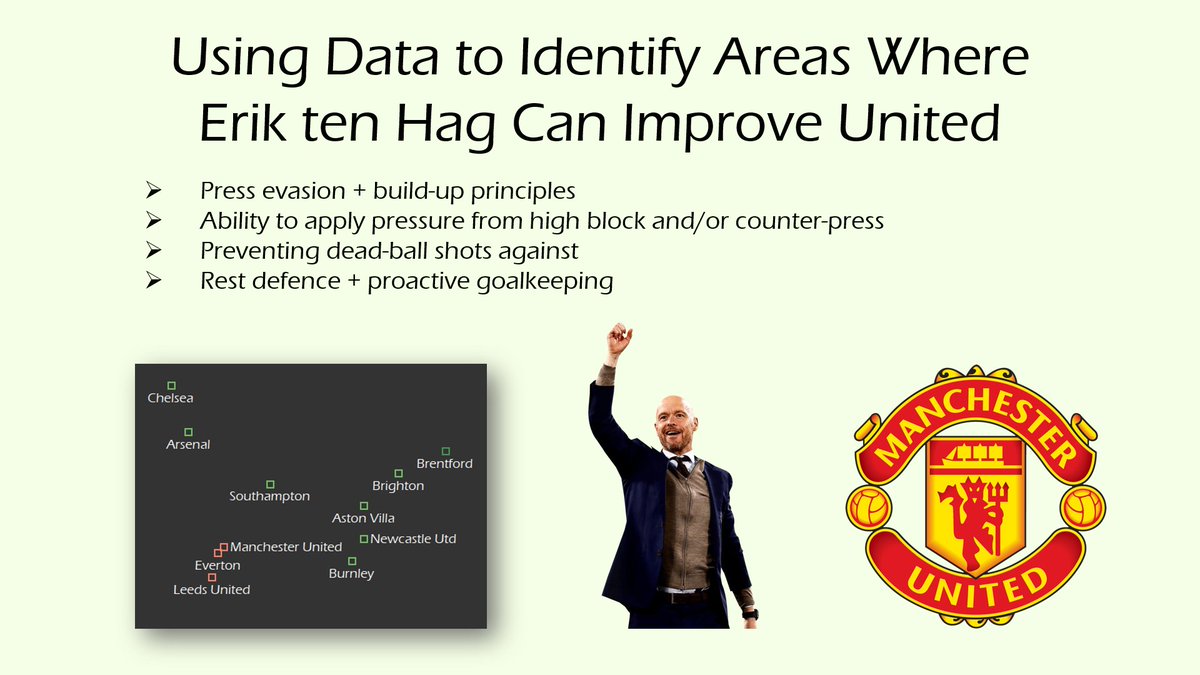📌 Gegenpressing [THREAD]:
- Why do teams use it?
- How to differentiate between modes of counterpressing
- Why counterpressing is pre-emptive, not reactive
- Why do teams use it?
- How to differentiate between modes of counterpressing
- Why counterpressing is pre-emptive, not reactive

A counterpress is a coordinated action to prevent a defensive transition – ie a scenario where your team is being counterattacked as you try to regain shape. Simply put – your team seeks to regain possession via a press in a timely manner.
A counterpress can be used defensively - to prevent a counterattack, or offensively - to retain possession, thus retaining territory or pressure, or to create a simulated state of disorder upon which you can capitalise.
Ultimately, you're preventing a defensive transition.
Ultimately, you're preventing a defensive transition.

I will analyse zonal counterpressing by analysing Klopp’s Liverpool, and positional counterpressing by analysing Guardiola’s Manchester City.
As presented by @Worville, Liverpool frequently make low-probability crosses from wide, and often from deep.
Aside from just crosses, their general progression game also revolves around out-to-in balls, into central zones.
Aside from just crosses, their general progression game also revolves around out-to-in balls, into central zones.
https://twitter.com/Worville/status/1429058090608046080?s=20
An example is the use of Trent Alexander Arnold, who is the perfect candidate for this mode of progression. It may seem ‘‘very trial and error’’ – or worse, ‘‘hit and hope’’, but the beauty is in the detail. TAA attempts these balls in build—up, progression and creation.
Henderson/Elliot rotate wide in possession, as Trent inverts to maintain central numbers. They also look for those out-to-in balls.
Liverpool often play into zones of ‘‘Simulated Transition’’ - where Liverpool almost create a counterpressing opportunity to capitalise on the opposition’s defensive disorganisation when they are dangled the carrot of ball possession. 

We can see how they 1) have the numbers to press after a turnover and 2) are triggered to collapse on the zone where the pass/cross is zipped into. This allows them to create pressure, choke opposition and retain possession.
The same mode of zonal counterpressing occurs when Trent is central and one of Henderson/Elliot is out wide.
Liverpool’s counterpress is not only active, triggered by the ball entering the zone, but pre-emptive: their in-possession set-up facilitates it.
Similarly, Manchester City utilise a pre-emptive counterpressing system, discussed below:
Similarly, Manchester City utilise a pre-emptive counterpressing system, discussed below:

Guardiola has City set up with overloads in build-up, be it the 3-2 or the revamped 2021/22 system where rotations create a 2-3 system. City have up to five players in close proximity of the ball in most phases of possession.
City’s approach is positional: they ensure the overloads are where ball possession is in the phase - be it build-up or otherwise. Upon losing possession, they are close by to foul, prevent counter attacks and regain territorial dominance.
City implement this in most phases. By using rotations, they can overload all phases. Their counterpressing approach is cold and efficient; and has facilitated their immense defensive record in the past year.
Ultimately, Liverpool’s zonal approach is more reminiscent of an automatism-based system and when done poorly (due to fitness, injury or otherwise) can result in periods of conceding big chances.
City’s approach is far less risky but is a completely different implementation of the same idea (counterpressing). It has been interesting to compare these approaches and view the relative successes and failures.
• • •
Missing some Tweet in this thread? You can try to
force a refresh
















